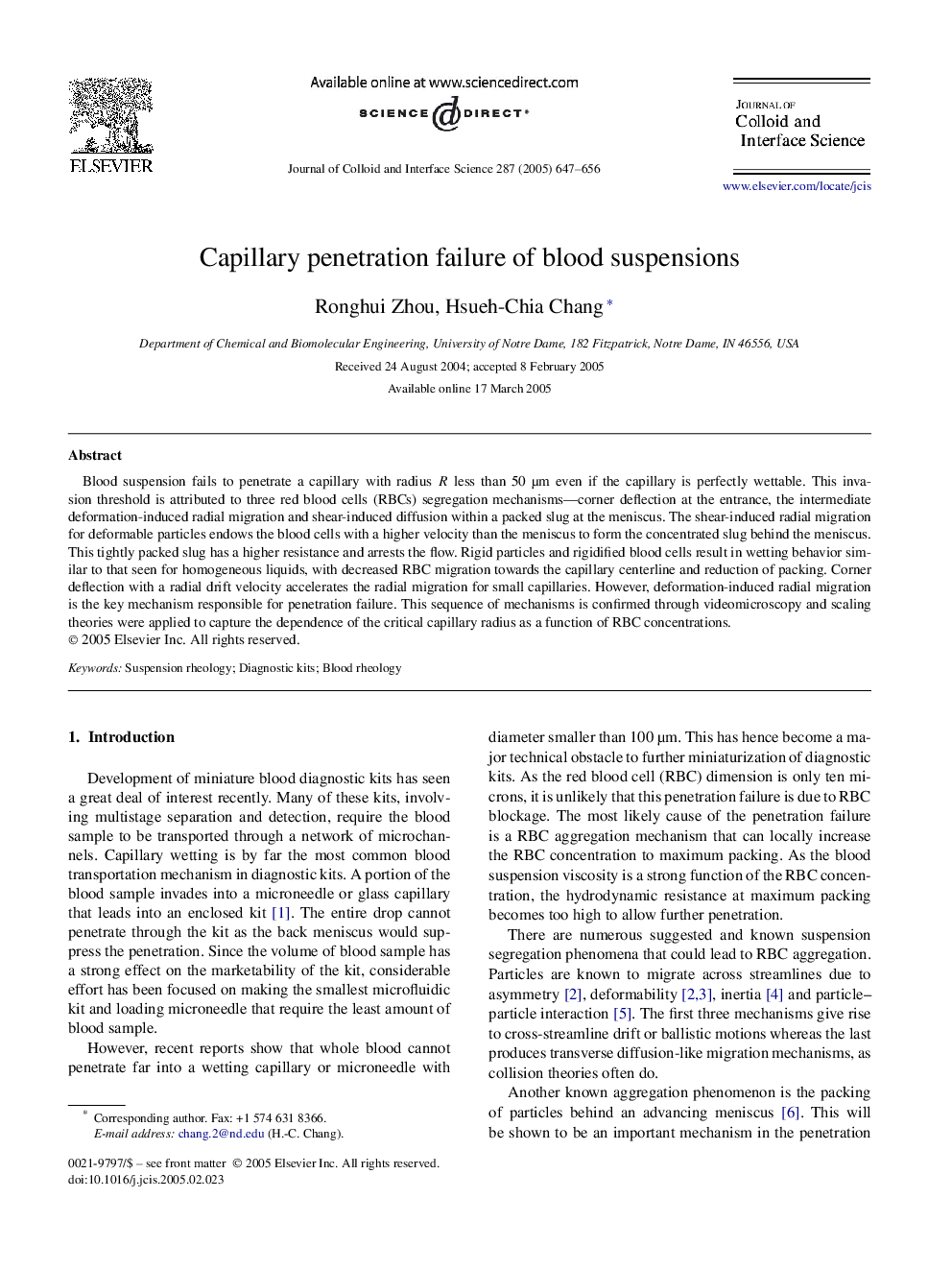| Article ID | Journal | Published Year | Pages | File Type |
|---|---|---|---|---|
| 10377792 | Journal of Colloid and Interface Science | 2005 | 10 Pages |
Abstract
Blood suspension fails to penetrate a capillary with radius R less than 50 μm even if the capillary is perfectly wettable. This invasion threshold is attributed to three red blood cells (RBCs) segregation mechanisms-corner deflection at the entrance, the intermediate deformation-induced radial migration and shear-induced diffusion within a packed slug at the meniscus. The shear-induced radial migration for deformable particles endows the blood cells with a higher velocity than the meniscus to form the concentrated slug behind the meniscus. This tightly packed slug has a higher resistance and arrests the flow. Rigid particles and rigidified blood cells result in wetting behavior similar to that seen for homogeneous liquids, with decreased RBC migration towards the capillary centerline and reduction of packing. Corner deflection with a radial drift velocity accelerates the radial migration for small capillaries. However, deformation-induced radial migration is the key mechanism responsible for penetration failure. This sequence of mechanisms is confirmed through videomicroscopy and scaling theories were applied to capture the dependence of the critical capillary radius as a function of RBC concentrations.
Related Topics
Physical Sciences and Engineering
Chemical Engineering
Colloid and Surface Chemistry
Authors
Ronghui Zhou, Hsueh-Chia Chang,
